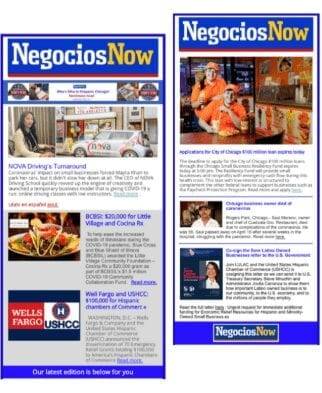By David Steinkraus-
Chicago.- When you want money and have a house for collateral, you go to a bank. If you have more complicated assets, you go to Carlos X. Montoya, a career banking executive, who is now helping people convert one of the world’s oldest financial assets into a more fluid form using the latest 21st-century technology.
Montoya is chairman and CEO of Tall Ship Partners Fund, a Chicago company that is using an advanced form of the technology behind cryptocurrencies to turn unmined gold into a digital certificate that may be traded or used to settle financial transactions.
Following his banking career, two events brought Montoya to his current focus. First, some Canadian citizens with mineral rights to gold reserves approached him about gaining greater access to banking services. The reality in Canada, Montoya said, is that unless you have at least $5 billion in proven mineral rights, very few banks are interested in helping you raise the capital to mine it. Second, he learned about blockchain, the digital technology behind Bitcoin and other cryptocurrencies. Blockchain is used to create the secure data blocks that can track purchases and sales, and when coupled with proper controls, it can be used by digital asset issuers to make sure money or assets aren’t stolen. What Montoya saw in blockchain was fluid and secure way to convert the unmined gold into a solid financial asset.
Through Tall Ship, he created the financial ecosystem required to introduce Orebits as an institutional-level asset. Each Orebits is a digital certificate worth 1 ounce of unmined gold and backed by 5 ounces of proven gold reserves. Orebits certificates can be sold, traded or used in transactions, but unlike cryptocurrencies, Orebits are backed by a tangible asset and maintained on a secure institutional ledger.
Digital currency may be an unfamiliar term, but the idea is actually familiar, Montoya said. Many people have credit cards that pay rewards in points, and cardholders may redeem those points for an airline ticket, gasoline or other goods. Yet the points don’t physically exist, he said. They are valuable only because cardholders and the Technology puts value in buried treasure
“This is worlds away from simply helping people cash checks and get mortgages. My goal here is ultimately helping people realize value and liquidity within the financial system by leveraging assets that they either own or should have access to.” company issuing the points, within a secure “digital wallet,” agree that they do exist.
From his banking background, Montoya applied some of the same regulatory ideas that make the banking system trustworthy. That helps make the asset safer for customers and reassures financial institutions that Orebits is safe, he said.
Montoya’s introduction to the financial system was unusual and practical. “I repossessed cars for American General Finance while I was working my way through Loyola University,” he said. That knowledge led to his first banking job in consumer loans. He moved to commercial banking, worked his way up, and was eventually part of the group that bought Republic Bank of Chicago. After a 15-year stay with Republic, including the last five years as CEO of the bank, he wanted a fresh venture that would also address social justice needs. He and a group of investors formed AztecAmerica Bank to provide financial services to under-served Hispanics.
“We were very early pioneers in financial literacy,” he said. “Through education and execution, we were proving some things some that folks didn’t think could be proven.” The bank proved that people with lower incomes and limited credit histories could be successfully brought into the banking and financial system, he said.
The Great Recession put an end to that work. The Hispanic community, and the banks serving them, were hard hit by the housing crash. When the federal government began bailing out banks, smaller banks like his were the least favored, he said. AztecAmerica eventually became part of Republic Bank.
Orebits isn’t banking in the traditional sense, but does fit a larger goal.
“This is worlds away from simply helping people cash checks and get mortgages. My goal here is ultimately helping people realize value and liquidity within the financial system by leveraging assets that they either own or should have access to,” Montoya said.
As if to prove Orebits is on the right path, he said, J.P. Morgan recently created its own digital coin following the Orebits model. Each J. P. Morgan coin is backed by $1 and will be used internally by the company to settle large customer accounts.
From a social and environmental justice perspective, Orebits is also useful, Montoya said.
“With Orebits you can realize the locked-in value of your mineral assets without having to extract them from the earth,” he said. He understands this having studied some of the notorious labor issues associated with mining and from growing up in California where rivers are still full of silt from the California Gold Rush that began in 1848.
Many people became enthusiastic about cryptocurrencies, and many people lost a lot of money by betting on currencies that failed. (By one count, more than 1,000 cryptocurrencies have died.) But Orebits is different. They are fully transparent, gold reserves backed, held in institutional custody, and only available to qualified investors, Montoya says.
In a way, Orebits is a very conservative idea and an old one. It points back in history to the time when each U.S. dollar was backed by a fixed amount of gold sitting in a vault. But the idea now moves at the speed of light.










